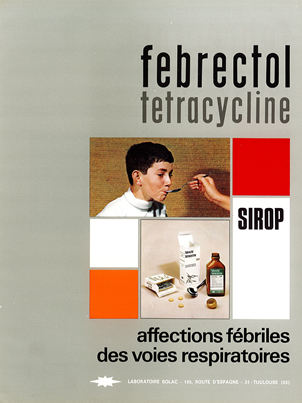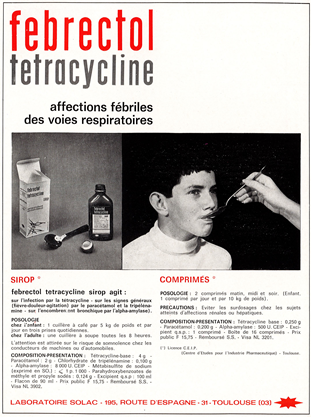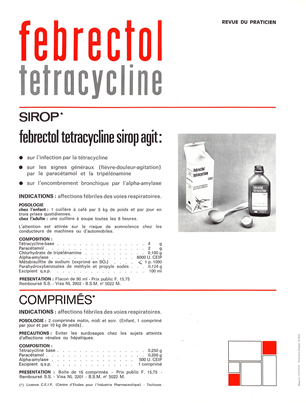Both Febrectol tablets and a syrup were available to treat infections of the respiratory tract. They contained tetracycline base as an antibiotic, paracetamol (acetaminophen) to reduce pain and fever, and the enzyme a-amylase to facilitate the digestive process. Tetracycline and paracetamol are among the most widely used pharmaceuticals worldwide. Used in excess, they can cause hepatotoxicity in humans, but at normal dose they are useful to limit certain bacterial infections and to reduce inflammation. Unfortunately, they are also among the classical environmental pollutants found in wastewaters and polluted soils.
The syrup also contained the antihistaminic aminopyridine derivative called tripelennamine. It is a cationic amphiphilic compound, known to function as a histamine H1 receptor antagonist. This compund was discovered in the lates 1940 and use for more than 50 years in human and veterinary medicines. For example, the compound was used to treat pruritus in dogs and cats. In addition, the molecule has been used to treat seasonal allergic rhinitis in human but abandoned later, replaced with second-generation H1 antihistamines with greater potency, longer durations of action, and minimal sedative effects. Today, injectable tripelennamine hydrochloride remains occasionally used to treat pruritus in veterinary medicines, notably in horses.






